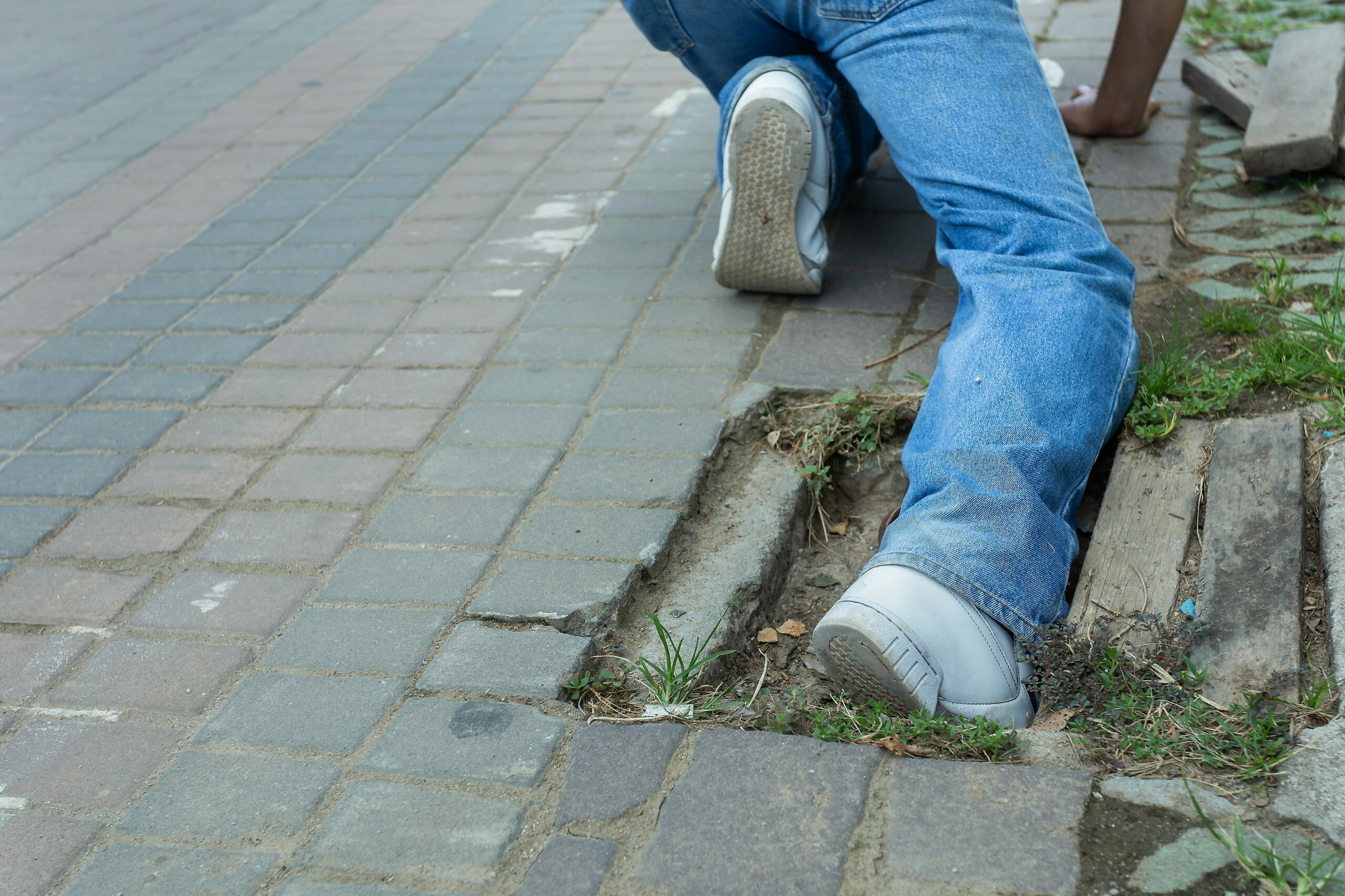You might think any lawyer would be able to handle a broken sidewalk case. After all, what could be so hard about a trip and fall lawsuit? At first blush, a trip and fall might seem like an area of law that doesn’t require special expertise. However, these types of cases are some of the most complex in personal injury litigation.
So, what makes a broken sidewalk case so tricky?
Documentation and Preserving Evidence
In any sidewalk case, it’s imperative that a lawyer or investigator visit and photograph the exact location as soon as possible after the trip and fall accident.
Why? Sidewalk conditions can change or be repaired. Memorializing the defect is critical.
Equally as important is establishing the exact location of the trip and fall to determine the responsible parties to name in the lawsuit.
Determining Who to Sue
You might assume when you fall on a broken sidewalk in the City of New York that the City is liable for your injuries. While that was the case years ago, the law has changed.
Now, most abutting property owners are legally responsible for any defective conditions that gave rise to accidents in front of their building — an exception is made for one, two, or three-family houses that are not used for business purposes. In these cases, the City may still be named in the suit.
Liability can be complicated. A good lawyer knows to sue both the abutting landowner, any tenant, and the City of New York. Since there’s only a 90-day window to notify the City of a claim, it’s best to include them in the action until the status of the property is confirmed.
Believe it or not, maintenance of the sidewalk curb is not considered part of the abutting landowner’s responsibility. This means that if you fall on a strip of concrete next to the sidewalk squares that flanks the street, the City of New York is who you need to sue.
The same is true for a tree-pit — the area cut out of the sidewalk where a tree grows is the City’s responsibility.
Pursuing a Case Against the City
As opposed to suing a private landowner, there are several disadvantages when it comes to suing the City.
Importantly, the City must be notified of your claim in writing within 90 days of the accident. Unlike a private landowner — who you have three years to sue — suit must be filed against the City within one year and 90 days of the accident. The City also gets to have a hearing with the trip and fall victim before a lawsuit can even be commenced.
Additionally, the City has its own private courtrooms throughout the five boroughs and is often given deadlines that extend well beyond those offered to private litigants. This means that lawsuits commenced against the City can drag on for a while, despite the best efforts of the victim’s lawyers.
One of the most significant advantages the City has in defending broken sidewalk trip and fall cases is that a victim must be able to prove the City had written notice of the sidewalk’s condition before the accident occurred. Without being able to demonstrate the City had “actual notice,” a victim won’t be able to recover compensation — despite how dangerous the defect was.
Just Because the City Can’t Be Held Liable Doesn’t Mean the Case is Lost
To get an idea of how complicated a broken sidewalk trip and fall case can get, here are some facts about a case we recently handled:
A woman was walking in the East Village after leaving a restaurant. As she made her way down the street, she tripped on a raised sidewalk that was on the property line of two abutting landowners. As a result, she fell into a tree pit next to the sidewalk that wasn’t level with the pavement. Due to the fall, she sustained severe injuries to her ankle and back.
We determined that not only should both landowners be sued, along with the City, but the restaurant/bars that were tenants should be included in the suit due to language contained in their leases.
Although there was no prior written notice to the City concerning the tree pit (and thus, no liability could be found against them), the adjacent property owners and their tenants could not escape liability.
We proved that the property owners and their tenants had constructive notice in that they knew, or should have known, about the defective sidewalk condition because it was so apparent — even though the City’s tree pit caused the raised sidewalk which led to the fall.
Bottom line: If you think you can give your sidewalk trip and fall to just any lawyer, think again. An experienced and knowledgeable attorney who knows the ins and outs of cases involving trip and falls and municipal liability can make all the difference to the outcome in your case.
Contact an Experienced New York Personal Injury Attorney
Sidewalk trip and fall accidents can result in serious and debilitating injuries. It’s critical you have an attorney on your side who can ensure you get the compensation you deserve. We regularly secure millions in compensation for our clients who have suffered personal injuries in even the most complex broken sidewalk cases in New York City.
The Edelsteins, Faegenburg & Blyakher LLP have extensive experience fighting for the rights of accident victims to ensure they get the maximum compensation they deserve. Located in Manhattan, we have been handling personal injury cases throughout New York City since 1937. Call to schedule a free consultation at (212) 425-1999 today.

